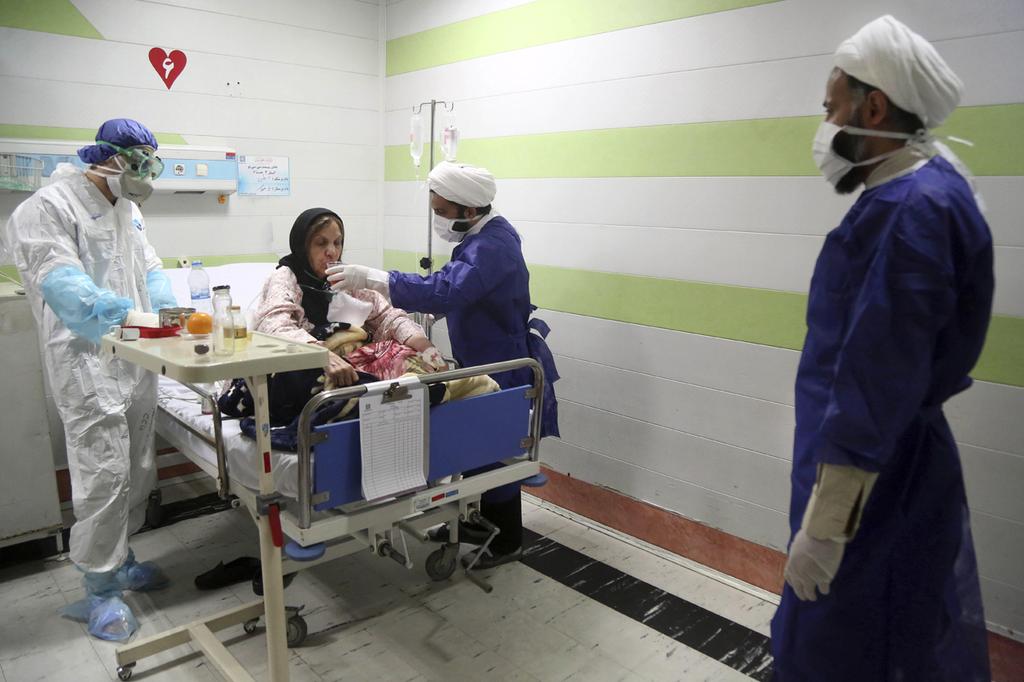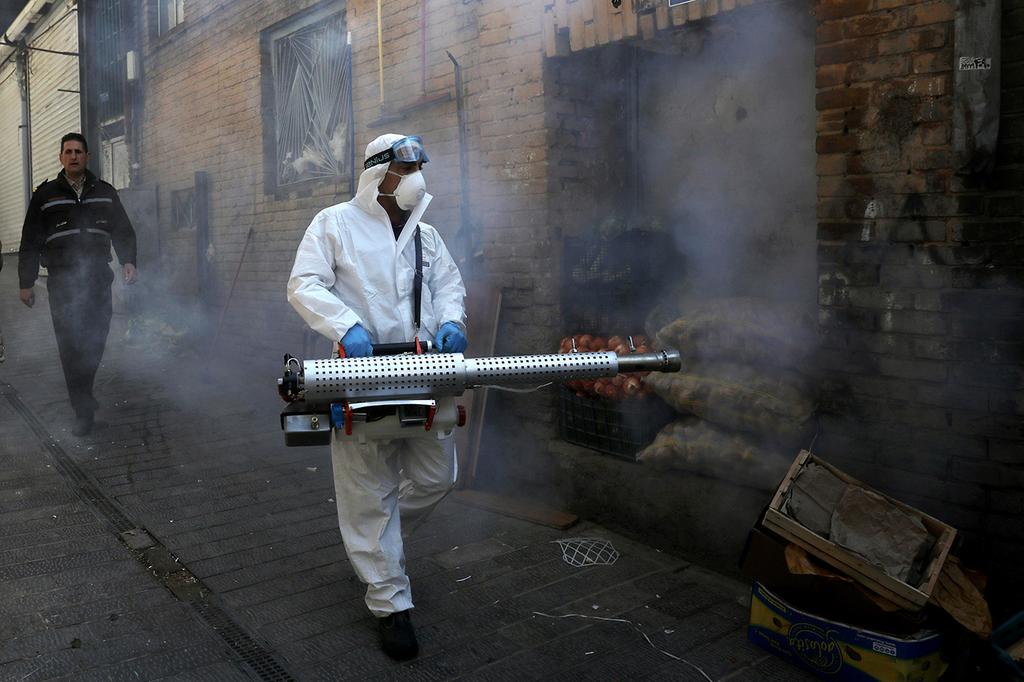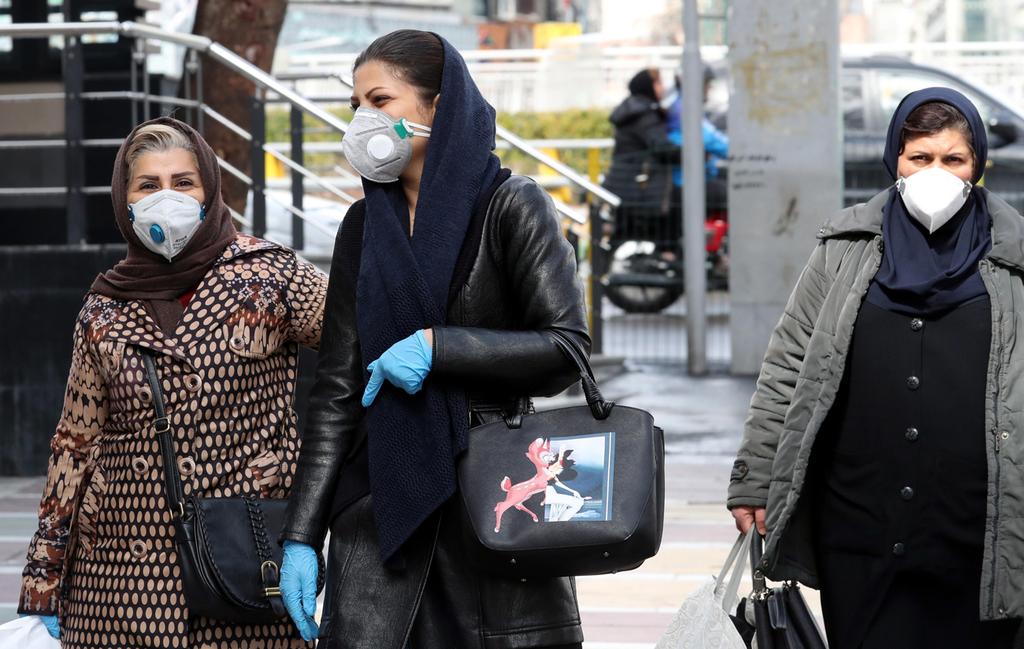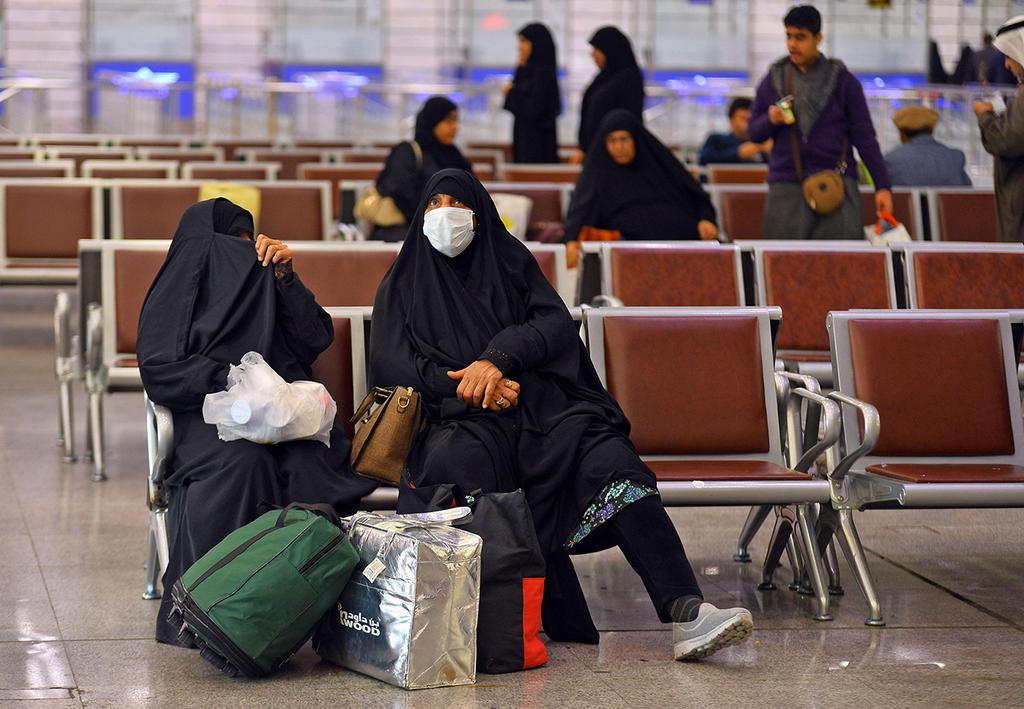Appearing before the cameras coughing and sweating profusely, the man leading Iran's response to the new coronavirus outbreak promised it was of no danger to his country.
"Quarantines belong to the Stone Age," Iraj Harirchi insisted.
A day later, he himself would be in quarantine from the virus.
Harirchi's story is a microcosm of what has happened in Iran amid the coronavirus pandemic. Roughly nine out of 10 cases in the Middle East come from the Islamic Republic, which has reported nearly 15,000 people infected and at least 853 deaths amid fears that many cases may still be underreported. While most people who are infected recover, the virus spreads rapidly and can kill the elderly and those with breathing problems or other underlying illnesses.
Days of denial gave the virus time to spread in Iran as the country marked the 41st anniversary of its 1979 Islamic Revolution with mass demonstrations and then held a parliamentary election in which authorities desperately sought to boost turnout.
Although Iran has one of the Mideast's best medical services, its hospitals appear to be overwhelmed and authorities have asked for 172 million masks from abroad. It also has asked the International Monetary Fund for $5 billion, the first such loan for Iran since 1962.
The Islamic Republic has an opportunity to limit the virus as the Persian New Year, Nowruz, approaches, but authorities appear unable or unwilling to stop travel between major cities as local towns affected by the virus threaten to set up their own checkpoints to turn away or even attack outsiders. That's in sharp contrast to Iraq and Lebanon, Iranian allies that have restricted movement while facing a fraction of the reported infections.
What happens next will not only affect Iran's civilian government and Shi'ite theocracy, whose officials already have fallen ill, but also the wider world.
"Judging by the fact that Iran has now asked for a $5 billion loan from the IMF, this speaks to how dire the situation is getting and them realizing that it's spun out of control," said Dr. Amir A. Afkhami, an associate professor at George Washington University who studies Iran.
'PATIENT ZERO' AND AN ELECTION
In a country like Iran, where the state controls all broadcasters and journalists face restrictions, many things about the outbreak remain unknown. Chief among them is who was "patient zero" - the person who was first infected with the coronavirus in the nation, and where.
Public comments point to the city of Qom, 125 kilometers (80 miles) southwest of Tehran, on the country's windswept central desert plateau. How the virus arrived there remains in question.
Authorities suggested that perhaps an Iranian businessman returned from China with the virus. Qom is home to major Shi'ite seminaries that draw Chinese students. It also is along a $2.7 billion high-speed train route that a Chinese company is building, a sign of China's outreach to Tehran amid crushing U.S. sanctions. China is also constructing a solar power plant there.
From late January, worries could be seen on the front page of the pro-reform newspaper Aftab-e Yazd.
"Mysterious virus at Iran's gates," its banner headline warned as China began a lockdown to control the outbreak. Yet travel between China and Iran continued.
The first two coronavirus cases were reported Feb. 19, with the announcement that both died in Qom. Since it can take up to two weeks to show symptoms, they could have gotten it in early February.
Iranian authorities haven't offered any details. Iranian analysts suggest it might be because the country marked the 41st anniversary of the Islamic Revolution during that period.
Iran also held parliamentary elections Feb. 21. The government desperately wanted a large turnout to boost its legitimacy after shooting down a Ukrainian passenger jet, killing all 176 people on board. Days earlier, a U.S. drone strike in Baghdad killed top Revolutionary Guard Gen. Qassem Soleimani, further shaking its credibility.
Iranian authorities already had disqualified thousands of candidates from running, ultimately tilting the election to conservatives. Supreme Leader Ayatollah Ali Khamenei even later accused foreign enemies of trying to influence turnout with the outbreak.
"The pretext of an illness and virus was used, and their media did not miss the slightest opportunity to discourage people from voting," Khamenei said.
The election saw Iran's lowest turnout since the revolution, with some voters wearing the masks that everyone soon would want, but people already were dying and fear was spreading.
SHRINES AND HAZMAT SUITS
Qom long has been the stronghold of Iran's Shi'ite clergy. A focal point of devotion is the golden-domed shrine of Fatima Masumeh, a Shi'ite saint. Crowds pray there 24 hours a day, seven days a week, touching and kissing the shrine.
That raises the risks for visitors. In Saudi Arabia, authorities have closed off access to the holiest sites to Islam over concerns the virus may spread there. Churches, mosques, temples, and shrines around the world have been closed or subject to stringent disinfecting campaigns.
However, in Qom and elsewhere in Iran, the shrines stayed open despite civilian health authorities demanding they close. Mohammad Saidi, who oversees the Fatima Masumeh shrine, insinuated that closing shrines was part of a plot against Shi'ites by U.S. President Donald Trump.
"Defeating Qom is the dream of treacherous Trump and his domestic mercenaries, but this dream will not be realized even in their grave," Saidi said on Feb. 22.
That decision likely gave the virus time to spread. Police later arrested those who posted videos online of themselves licking and kissing shrines.
"The city's religious epithet - "the nest of the Prophet and his family" - was intended to reassure believers worldwide that it was insulated against epidemics and other disasters," wrote Mehdi Khalaji, a Qom-trained Shi'ite theologian who is an analyst at the Washington Institute for Near-East Policy. "If early reports about the spread of the coronavirus prove correct, Qom's status as the ideological capital of the Islamic Revolution helped make it the pathogen's transmitting center to the rest of Iran and at least seven other countries."
Since then, hazmat-suited workers have fogged disinfectant and cleaned the shrines. Some mosques even hand out alcohol as a disinfectant to the poor despite Islam forbidding its consumption.
By Monday night, the Fatima Masumeh shrine and another one in Mashhad had closed, only to see online videos purport to show hard-line faithful storming the shrines' courtyard, demanding they open. But by that point, the virus had spread, reaching the highest levels of Iran's theocracy.
'THE SITUATION IS TERRIBLE HERE AND I HOPE GOD HELPS US'
Like blood from a beating heart, the infections in Qom coursed out across Iran in maps later shared by the Health Ministry. In Tehran, the virus began moving through the government and the Shi'ite theocracy.
Among those first infected was Harirchi, the deputy health minister who tested positive only a day after he downplayed the virus in a televised news conference.
It didn't stop there.
The virus killed Expediency Council member Mohammad Mirmohammadi, described as a close confidant of Khamenei. Hadi Khosroshahi, Iran's former ambassador to the Vatican, and Ahmad Tuyserkani, an adviser to Iran's judiciary chief, also died along with several lawmakers and a member of the country's Assembly of Experts.
The sick included Vice President Masoumeh Ebtekar, better known as "Sister Mary," the English-speaking spokeswoman for the students who seized the U.S. Embassy in Tehran in 1979 in the 444-day hostage crisis. The virus also infected senior Vice President Eshaq Jahangiri and two other Cabinet members, along with Revolutionary Guard members and doctors.
Soon, even 80-year-old Khamenei was seen wearing disposable gloves at a tree-planting ceremony. President Hassan Rouhani, 71, was pictured at a teleconference with the nearest official a few meters (several feet) away.
5 View gallery
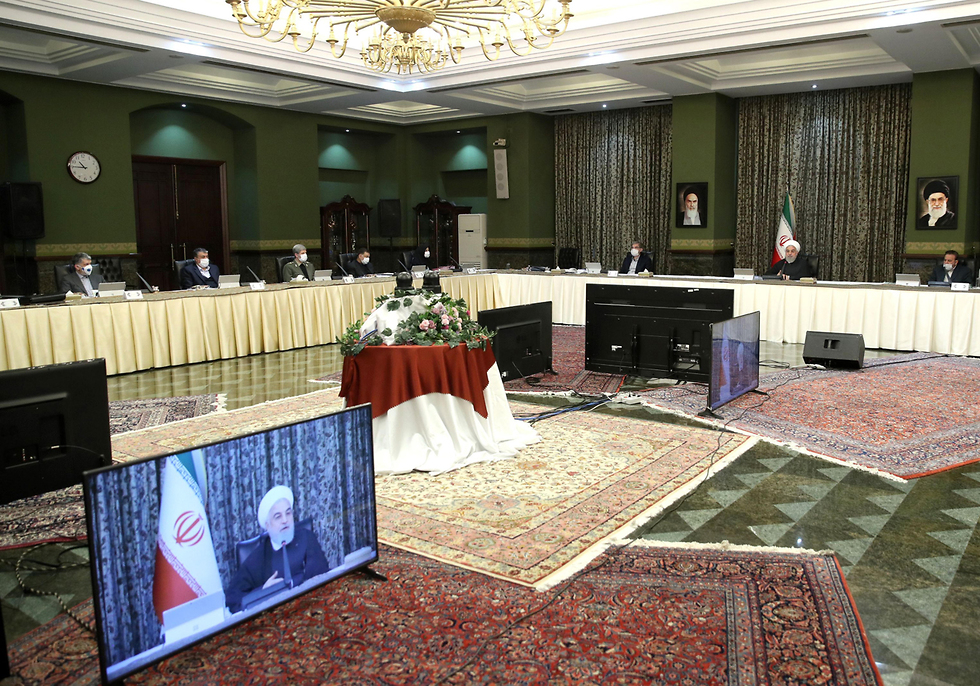

Iranian government conference over spread of coronavirus
(Photo: AFP, HO, IRANIAN PRESIDENCY)
The numbers soared. Iran's death rate from the virus now is higher than in other hard-hit nations.
That could be from the initial lack of testing kits and facilities. It also could be from what outside experts, Tehran lawmakers and other local leaders have alleged from the start: Iran was hiding the true number of infections and deaths.
Authorities initially denied that, especially after the BBC's Persian service said deaths far exceeded those reported at the beginning of the crisis, but denial appeared to weaken over time.
"We found out a little late that the coronavirus had entered Iran because we mistook it for the flu," Reza Malekzadeh, a deputy health minister, later said.
A man in Qom filmed rows of bodies in black bags and caskets awaiting burial for days in a trench lined with lime. He alleged all had tested positive for the coronavirus, although officials later said the bodies had been held pending test results.
"The situation is terrible here and I hope God helps us," he said while walking through the mortuary.
Authorities later arrested him.


